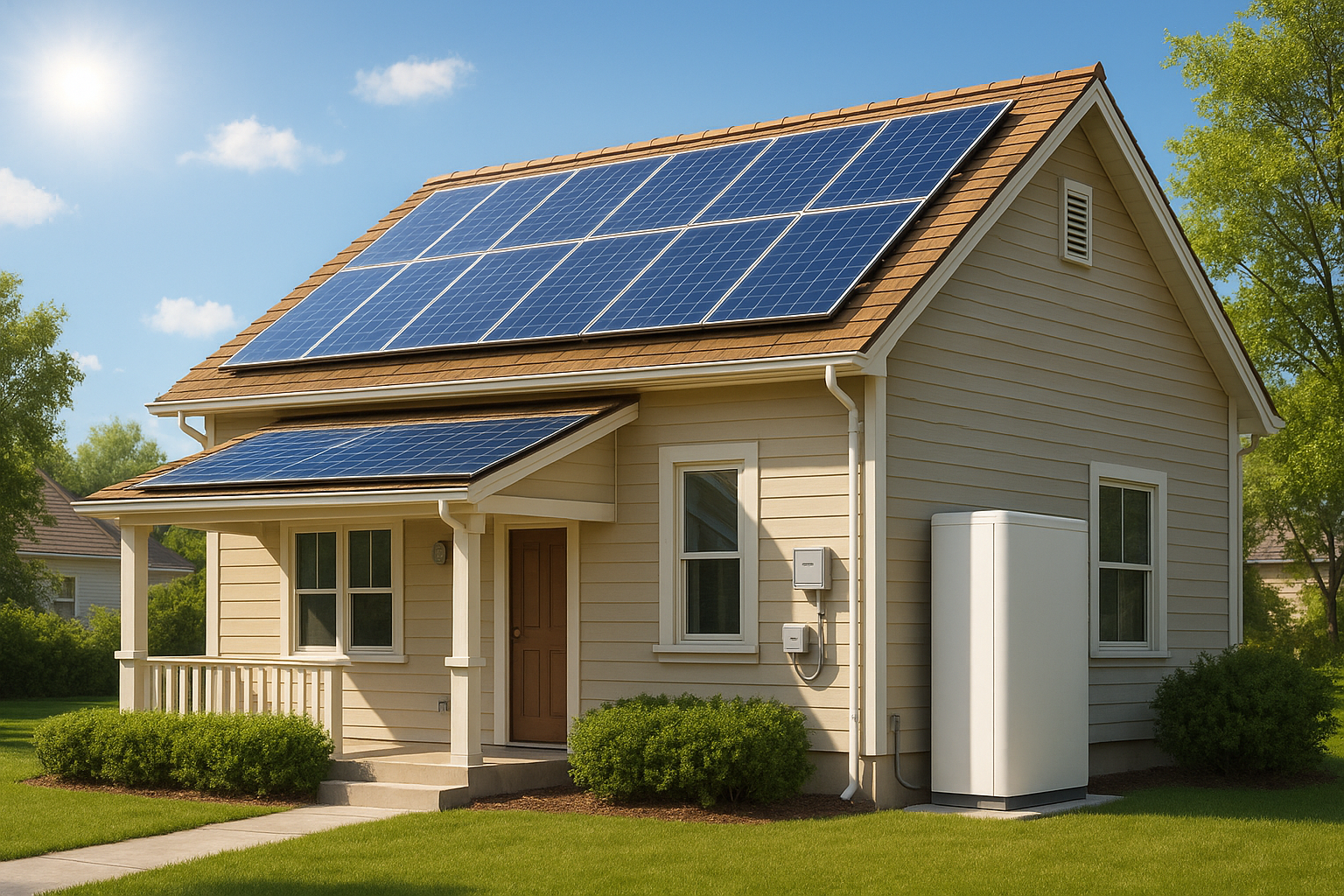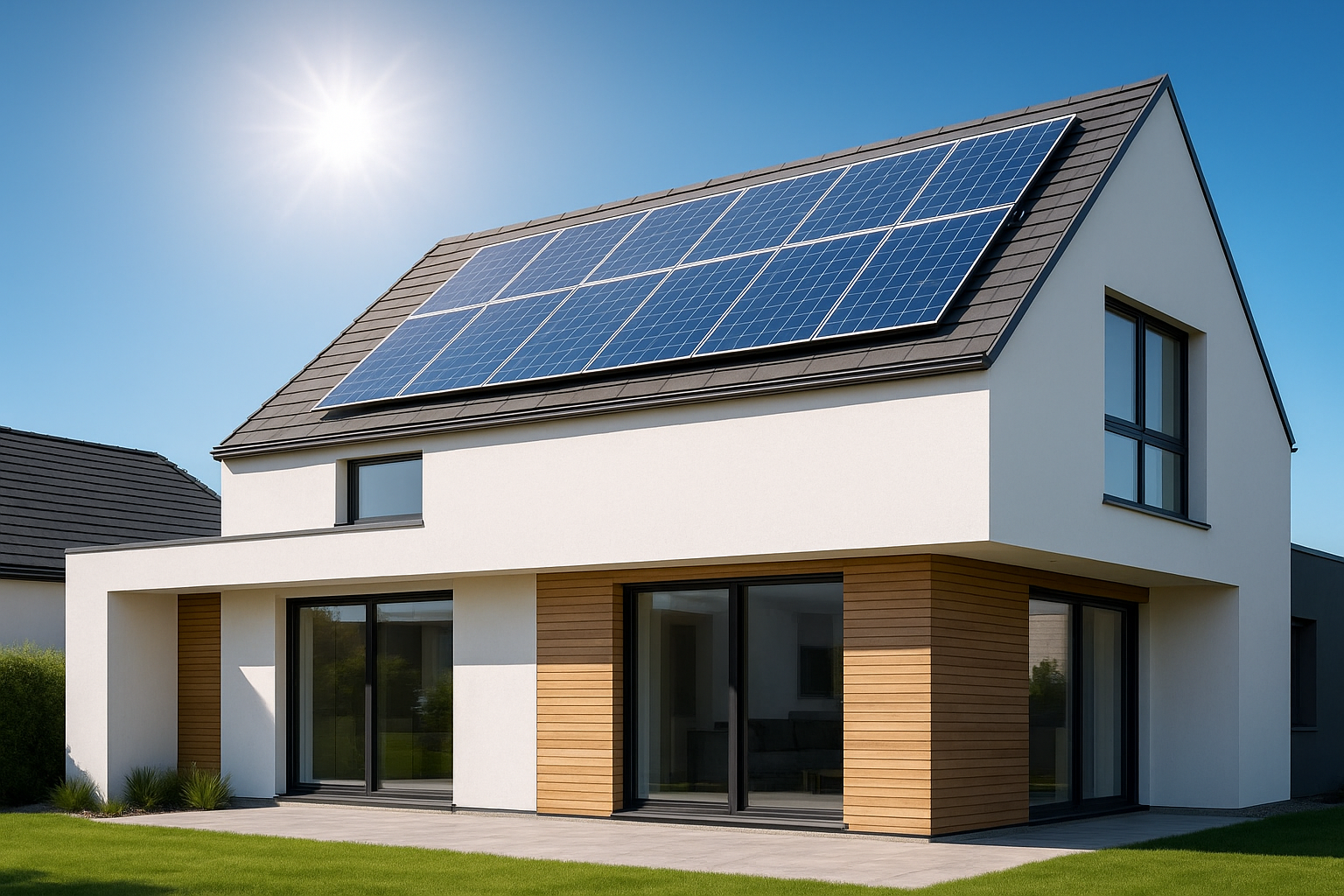For many homeowners, the idea of a solar retrofit brings thoughts of lower electricity bills. While significant savings certainly stand as a compelling benefit, the impact of solar energy extends beyond monthly expenses. A well-executed solar installation can substantially increase property value, making it a sound financial investment. This case study explores how a thoughtful solar retrofit transformed a traditional farmhouse, enhancing its market appeal and demonstrating the tangible value of clean energy solutions.
The Farmhouse's Energy Challenge
Consider a typical, older farmhouse, charming in its character but often inefficient in its energy consumption. These properties frequently rely on an aging electrical infrastructure, leading to unpredictable and high utility bills. For our case study farmhouse, located in a region with fluctuating energy prices, annual electricity costs consistently climbed, reaching an average of $3,500. Power outages, though infrequent, caused significant disruption, impacting daily operations and the comfort of the residents. The owners sought a solution offering both financial relief and greater energy security.
Their goal was clear: reduce dependence on the traditional grid, stabilize energy costs, and improve the property's resilience against power interruptions. They desired a system that could integrate seamlessly with their lifestyle, providing reliable power while upholding their commitment to sustainable living. The challenge involved not just generating electricity but also managing its use effectively to maximize savings and independence.
Designing an Independent Energy System

To address the farmhouse's energy needs, a comprehensive solar retrofit was planned. This involved installing a robust solar photovoltaic (PV) array on the south-facing roof, sized to meet a significant portion of the home's annual electricity demand. Central to this design was an integrated energy storage system, combining high-performance, safe, and reliable lithium iron phosphate (LiFePO4) batteries with a hybrid inverter. This approach offered more than just electricity generation; it provided a complete energy management solution.
The solar panels capture sunlight, converting it into direct current (DC) electricity. The solar inverter then transforms this DC power into alternating current (AC) electricity, suitable for household use. Any excess electricity generated during peak sunlight hours flows into the LiFePO4 battery system for storage. This stored energy becomes available during periods of low solar production, such as evenings or cloudy days, or during grid outages. This capability significantly increases energy self-consumption and reduces reliance on the local grid, minimizing reverse power flows, according to research by the International Energy Agency (IEA).
For a farmhouse, the ability to operate off-grid is a critical feature. The integrated system offered a seamless transition to off-grid mode during power interruptions, ensuring essential farm operations and household comforts continued uninterrupted. This level of energy independence provides significant peace of mind, especially in rural settings where grid reliability can sometimes be a concern.
Tangible Benefits: Energy Savings and Resilience
The impact of the solar retrofit on the farmhouse's energy consumption was immediate and impressive. Within the first year, the homeowners observed a substantial reduction in their electricity bills. Their annual energy costs dropped from an average of $3,500 to approximately $600, representing nearly an 83% decrease. This significant saving translated directly into more disposable income for the family and improved the farm's operational budget.
Beyond the financial savings, the farmhouse gained remarkable energy resilience. With the LiFePO4 battery storage system, the property maintained power during several local grid outages that affected neighboring areas. This ensured critical systems, from well pumps to refrigeration, remained operational, preventing potential losses and maintaining comfort. This capability transformed the farmhouse from an energy consumer vulnerable to grid fluctuations into a self-sufficient energy producer.
Here is a simplified comparison of the farmhouse's energy costs before and after the solar retrofit:
| Category | Before Solar Retrofit (Annual) | After Solar Retrofit (Annual) |
|---|---|---|
| Average Electricity Bill | $3,500 | $600 |
| Energy Bill Reduction | N/A | 83% |
| Grid Dependence | High | Low (High Self-Consumption) |
| Outage Resilience | Low | High |
Boosting Property Value: A Solid Investment
The financial advantages of solar extend beyond direct energy savings; they significantly enhance property value. Real estate studies consistently show that homes with solar installations command a premium in the market. According to a 2019 Zillow study, homes with solar panels sold for an average of 4.1% more than comparable properties without solar. More recent research from SolarReviews in 2025 indicates this premium has grown, with solar-equipped homes selling for an average of 6.9% more across the United States. For a median-valued home, this could translate to an additional $25,000 to $29,000 in value.
Another study by the Lawrence Berkeley National Laboratory (LBNL) found that each kilowatt of solar capacity could add $4,000 to $6,000 to a home's value. For a typical 6-kilowatt residential system, this means an added value of $24,000 to $36,000. This data underscores solar as one of the most valuable home improvements available, often yielding returns that surpass traditional renovations.
The farmhouse's solar retrofit directly contributed to a notable increase in its market value. Appraisers now factor in the reduced operating costs and enhanced energy independence, making the property more attractive to potential buyers. Furthermore, properties with solar installations often sell faster. A National Renewable Energy Laboratory study suggests solar homes sell 20% quicker, spending less time on the market compared to similar properties. This increased demand and faster sales cycle further confirm solar's positive impact on property value.
Beyond the Numbers: Environmental Stewardship
Beyond the compelling financial returns, the solar retrofit embodied the homeowners' commitment to environmental stewardship. Generating clean electricity directly from the sun reduces reliance on fossil fuels, significantly lowering the property's carbon footprint. This aligns with broader sustainability goals and appeals to a growing segment of environmentally conscious buyers who seek eco-friendly homes. Many buyers are willing to pay a "green premium" for properties with energy-efficient upgrades.
For the farmhouse, this meant becoming a beacon of sustainable agriculture, showcasing how modern technology can complement traditional living. It demonstrated a forward-thinking approach, contributing to a healthier planet while also securing long-term energy independence.
A Brighter Future
The farmhouse case study illustrates the profound advantages of a solar retrofit. By integrating solar panels, LiFePO4 batteries, and advanced inverters, the property achieved substantial energy cost reductions, enhanced reliability, and a significant increase in market value. This demonstrates that investing in solar and energy storage systems provides not only immediate operational savings but also a robust long-term financial return and a pathway to true energy independence. As more property owners seek reliable and scalable energy solutions, solar retrofits stand as a clear choice for a brighter, more sustainable future.





Leave a comment
All comments are moderated before being published.
This site is protected by hCaptcha and the hCaptcha Privacy Policy and Terms of Service apply.